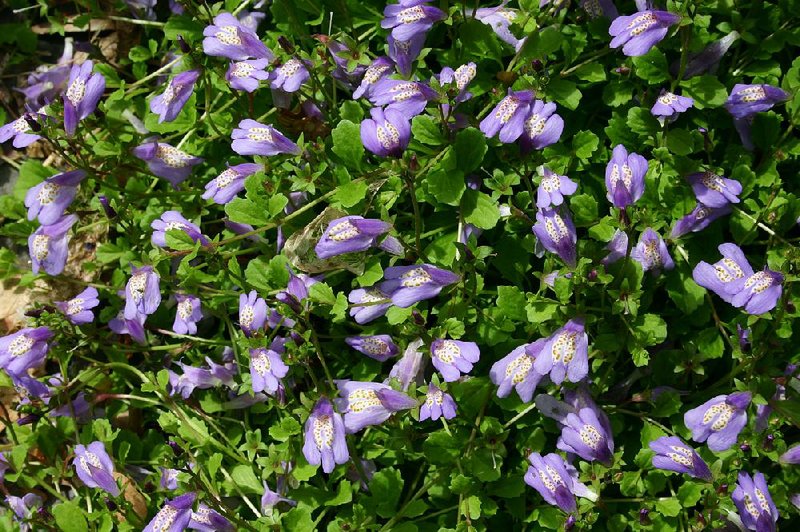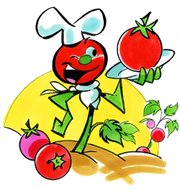Q Last year I tried to plant tomatoes in large pots in my sunny backyard in Maumelle. I got a lot of blooms, but the blooms just fell off and the plants didn't produce much fruit. I want to try again. What did I do wrong? What type of tomatoes are best grown in pots? We like them for sandwiches and salads and to just slice and eat.
A There are hundreds of varieties of tomatoes, but for containers I would opt for a cherry or patio type. There is a variety named "Patio," but you could also grow the yellow pear, grape tomato, "Sweet 100" and other small-fruited varieties. They are tough and good producers, and while they don't make big slices for sandwiches, they are sweet and easy to grow. The Patio tomato will produce a larger fruit, but there are other determinate varieties that have stronger stems and grow more upright, including "Celebrity" and "Bush Beefsteak." Keep them evenly watered and fertilize every two to three weeks. You need to fertilize container plants more often because you water more, causing the fertilizer to leach out.
Q There are two very large camellia bushes in my mother's yard that need to be trimmed away from the house. How and when is the proper time to trim? Also, can they be moved and when?
A Now is the time to prune. Pruning should be done in the spring after frost, and of course, after blooming is finished. If you do annual pruning, make sure the pruning is done before the middle of June so the plants can rebound and set flower buds in late summer for next year's bloom. If you are doing severe pruning, removing more than a third of the plant, the sooner you get the job done, the more time the plant has to recover.
Try to selectively thin branches, which leaves a more pleasing shape than the round meatball that many gardeners get from using an electric hedge pruner on the edge of the plants. Camellias can be moved, but fall is a much better time than now.
Q Several weeks ago, you wrote a column on a problem with camellias, which you had observed lately. I believe that it was some kind of tea scale, and I think that you recommended some kind of systemic insecticide. Lo and behold, I have found my camellia with white webs and powdery substance along with brown oval scales on the underside of many leaves. I was unable to locate your article and would appreciate it if you would repeat your advice. My plant is in a very large pot on my back deck. It is a fall- and winter-blooming variety.
A Systemic insecticides containing Imidacloprid are recommended. Merit, Bayer Advanced Tree and Shrub Insecticide and Criterion are a few brand names. These products are typically applied to the soil and taken up by the plants.
Q Last year the dogwoods in my yard had a lot of powdery mildew. I sprayed with a fungicide and kept them alive. They have leafed out well this spring but produced very few blooms. My question is how to best control the powdery mildew. Is there a systemic treatment that gives good control? Spraying took a lot of time and energy. If spraying is best, what do you recommend for a fungicide?
A Some years we have more powdery mildew than others, and some trees are more susceptible than others. Location and weather can also play a part. If air circulation is limited, and it is rainy and humid, powdery mildew tends to be worse. If your tree gets the disease every year, then a preventive fungicide treatment would be best. If last year was the first time they developed the problem, wait to see what happens. I will tell you that controlling mildew once it gains a foothold isn't easy, but even the preventive treatment requires regular sprays. Try thinning out some of the branches to improve air flow.
Q I have a question regarding pruning my hydrangeas. I did not cut them back after last year, and several still have dead blooms on them. Should I cut them off just below the dead blooms? Also, will I affect the growth by trimming some of the scraggly stems?
A Definitely cut off the old blooms now, but do not prune any living stems. The old-fashioned hydrangea blooms are set when it goes dormant, and if your plants are sprouting from old wood, then you should have blooms. Pruning the scraggly stems won't hurt the plant, but you will be removing potential blossoms. The time to prune, if needed, is immediately after flowering in the summer. Many folks have winter-damaged plants with all of the new growth coming up at the base, not on old wood, so they will not see many flowers this summer unless they are growing the re-blooming types.
Q What do you think this is? (The reader provided a photograph.)
A It looks like Mazus reptans. Mazus is a ground cover that typically grows only 2 inches tall. It spreads by forming creeping stems that take root at the nodes as the plants grow. The plant has small, oval leaves and small tubular flowers in purple or pink in late spring to early summer. It grows in sun to shade and is a nice ground cover.
Janet B. Carson is a horticulture specialist for the University of Arkansas Cooperative Extension Service. Write to her at 2301 S. University Ave., Little Rock, Ark. 72204 or email her at
jcarson@arkansasonline.com
HomeStyle on 05/02/2015

